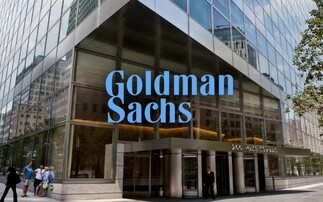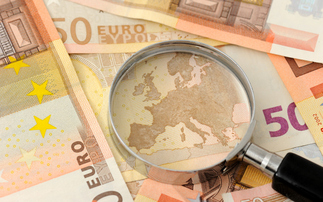Exchange traded funds are traded on exchanges in the same way as shares and can be bought and sold simply through brokers - and one significant advantage for clients are their low trading costs
Historically, advisers have focused on actively managed funds when fulfilling market exposure requirements, combining a range of funds to achieve diversification. Towards the end of the 1990s, the passive index tracker became a significant alternative to actively managed funds as markets seemingly only went up. This caused investors to question whether it was worth paying a higher fee for active management when many active managers underperformed the market.
In April 2000, exchange traded funds (ETFs) arrived in Europe. This structure had been trading in the US since 1993, where they had experienced phenomenal growth. In Europe, growth has also been rapid and at a time of falling markets and more obstacles than in the US. ETFs traded in Europe reached $25.31bn assets at the end of August 2004, compared with $240.02bn in the US (Source: Morgan Stanley). So should advisers be considering ETFs? To answer this question, we need to establish how an ETF works and what the benefits are.
What are ETFs?
• Index-tracking funds that trade on exchanges just like a share.
• Managed by asset managers.
l Bought and sold through brokers.
• Settled like other shares on the exchange.
What are the benefits of ETFs?
Low-cost trading and the implications for asset allocation. ETFs have total expense ratios (TERs) as low as 0.20% per year. They are traded on exchanges and are therefore available at any time the market is open via a broker. Prices are updated throughout the day - compare this with an index-tracking unit trust that is priced once a day. Dividends are also paid on ETFs like unit trusts.
Active vs passive
Advisers and asset allocators can often satisfy equity exposure requirements via index trackers. ETFs are typically the lowest cost route to exposure to an index. In an environment of low returns on the stock market, the fee paid to active managers once again comes under scrutiny. If active managers cannot add value in range-bound markets, then it may be worth considering a low-cost tracker to improve the overall return.
Shorter investment time period
The low-cost attribute also means that the time frame for investment can be fairly short. The drawback for some advisers, depending on their remuneration structure, will be the lack of trail commission. However, the inclusion of ETFs in an adviser's toolkit can still add significant value for a client.
Bridging transitions
ETFs can bridge gaps in the advisory process. Exposure to various markets can be achieved for the short term while the adviser determines the appropriate opportunities for the client. ETFs can transform the adviser's role into a true asset allocator - providing tactical asset allocation.
Fine-tuning asset allocation
ETFs allow for fine-tuning of asset allocation. If a portfolio becomes unbalanced because of under- or outperformance of one particular sector, the portfolio can be rebalanced in the short term through ETFs until such time as the portfolio can be rebalanced. For example, the imbalance caused by the outperformance of a Japan fund could be balanced by investment in ETFs to balance the overexposure, or by shorting a Japanese ETF.
Core and satellite
The core and satellite approach to asset allocation has become more popular in recent years, challenging the traditional concept of balanced diversification across regions and asset classes. However, a sophisticated asset allocation can be achieved with a core ETF index tracker with satellite exposures to key asset classes.
More advanced strategies
Other benefits from using ETFs are:
• Transparency: Intra-day prices are known to investors and the underlying portfolio can be viewed daily. Compare this to an index unit trust that discloses holdings annually to the public.
• Liquidity: There are generally no liquidity issues and the investor can deal in size without affecting price, since, in theory, an ETF's liquidity should reflect the liquidity of the underlying constituents and not the trading volume of the ETF. If demand for an ETF rises, more shares can be created to ensure the ETF reflects the prices of the stocks it holds and not the demand for the ETF itself. This mechanism is designed to ensure that the price is never be too far away from the net asset value (NAV). Compare this to an index unit trust that does not trade on an exchange, where the index value can move significantly away from the price of the unit trust between valuation and purchase or sale.
The ETF structure allows larger investors to create and redeem shares in the fund on a daily basis at NAV. This is done in a large number of shares which represent a creation or redemption basket. Newly created shares can then be traded in the secondary market. ETFs should trade at a price close to their NAV because if a discount were to exist, a large investor could arbitrage this difference away. In the US, this has proved to be an efficient mechanism for ensuring that the price trades in line with the underlying NAV.
Long or short
Going long or short allows a manager to turn a long-only fund exposure into a market-neutral exposure via shorting that region's index. In addition, there is the ability to hedge a market or sector exposure.
ETFs in Europe
Considering the wider ETF market across Europe, in October 2004, the aggregate volume of ETFs traded on European exchanges increased 14.06% from September to almost 195 million shares. However, this volume was 11% below the average monthly volume of the previous year of 219 million and 39% below the same month in 2003. Across Europe, the volume of trade in ETFs is concentrated in a few exchanges, with three exchanges accounting for more than 80% of overall European trade over the last year to October 2004. ETFs trading on the Deutsche Borse account for, on average, 47% of that volume, with the London Stock Exchange (LSE) accounting for 21% and Paris Euronext Accounting for 13%.
Hence, more than 50% of the volume traded in the month was accounted for by the top four ETFs, while the top 20 ETFs accounted for over 90% of volume traded.
Many ETFs in Europe are traded on several exchanges. The predominant currency is the euro, but there are also ETFs listed in US dollars, sterling and Swiss francs. It is interesting to observe the differences in volumes traded for the same ETF on different exchanges. These can be partly explained by investor preference for currency denomination, the size of the exchange and its presence in the market, liquidity and the length of time the exchange has been trading.
In addition, figures in this report show that the liquidity effect matters, with a potential impact on tracking error and costs of trading. Some of the differences in trading volumes are reflected in differences in the bid-ask spread and the size of the discount or premium to NAV.
By way of an example, the most traded ETF in Europe by volume - the iShares FTSE 100, traded on the LSE - is also traded on virt-x in Switzerland.
While the volume traded in October on the LSE was 38 million shares, the volume traded on virt-x was only 52,700. In this case, the currency of denomination plays an important part, with the ETF trading in sterling in London and in euros on virt-x.
Conversely, the iShares Dow Jones Stoxx 50 is traded in all of the seven main exchanges. Over 65% of the trade in this ETF in October was made on the Deutsche Borse in euros, but less than 1% was traded on the LSE in sterling. The widest discount to NAV in October for this ETF was found on virt-x at 1.45%. Virt-x traded less than 1% of the month's volume.
Furthermore, the Fresco Dow Jones Stoxx 50, a similar instrument, is traded in euros on three exchanges but had a discount of more than 3% across each exchange in October. Often there is a 'duplication' effect when an ETF is traded on more than one exchange. This means there is an impact on liquidity and tracking error, leading to increased costs to investors when the bid-ask spread widens.
ETFs are noted for their low-cost characteristics. In liquid markets, these should be reflected by a tight bid-ask spread. However, evidence shows that ETFs do not always achieve this. Bid-ask spread data from Italy shows that the average spread for ETFs that are traded solely on the Borsa Italiana is higher than the average spread for ETFs which are traded on multiple exchanges.
At the exchange level, ETFs in Europe increased 14.06% in volume terms in October. Underlying that figure, there was considerable volatility in exchange volumes, with volumes increasing 13% on the Deutsche Borse and 54% on Euronext Paris, yet decreasing 24% on the SWX Swiss Exchange. This month-to-month volatility in trading volumes is common and is illustrated by the monthly volumes from the Deutsche Borse over the last year.
INFORMATION
Advisers are encouraged to contact Lipper regarding further information about ETFs. In addition, a useful source of further information is the iShares site run by Barclays Global Investors, which covers all the ETFs traded on the London Stock Exchange: (www.iShares.net)













